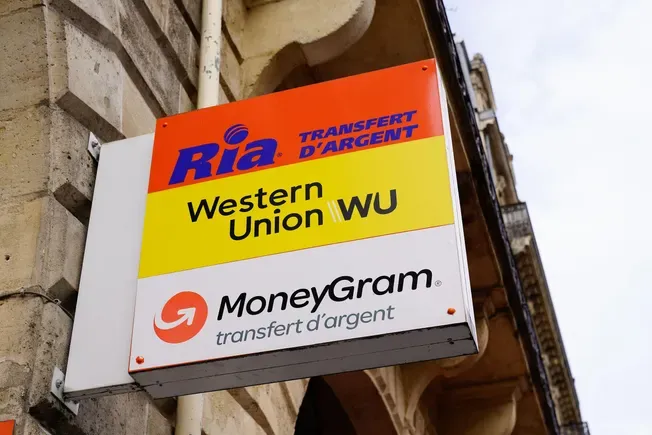Shutterstock / Andrij Vatsyk
HomeBuy, FirstBuy, Help to Buy, First Homes. The past couple of decades have seen numerous government-backed homebuying assistance schemes come and go.
But do such schemes really help first-timer buyers (FTBs) and the housing market?
The trials of FTBs are well documented. Those trying to get a foot on the property ladder typically face two obstacles: saving a sufficient deposit and being approved for a mortgage. In response, governments past and present have dreamed up ways to help FTBs, with a raft of assistance programmes of mixed success.
Qualis Credit Risk head of international business development Patrick Bamford says: “Support for first-timers has been a constant theme, specifically over the past decade, and it looks likely to continue.
The HTB scheme helped FTBs to get on the ladder without tackling the supply issue directly
“The recent levelling-up white paper had an ambition to improve the number of FTBs in every English region by 2030, although much will depend on whether the supply of affordable properties can also be significantly increased.”
The latest scheme is First Homes, which launched in June 2021 and offers new-build homes to first-timers with a discount of at least 30% compared to the market value of equivalent properties. This discount stays on the First Home forever, meaning every time the property is sold the new buyer benefits from the discount.
First Homes is similar to the Starter Homes Initiative, which offered a 20% market value discount from 2015.
But the scheme was scrapped in 2020 without a single home being built.
The mortgage guarantee scheme was necessary. It has provided confidence
London & Country Mortgages associate director of communications David Hollingworth says the plight of the FTB has elicited different approaches in terms of government-backed support.
“They have tended to focus on the twin challenges provoked by high house prices, namely raising a big-enough deposit and affordability. Looked at in isolation, many schemes have attacked those problem areas successfully,” he says.
Previous efforts
A glance at previous FTB initiatives reveals that, often, it was not only buyers getting a handout but developers too.
Open Market HomeBuy was launched in 2006 and allowed key workers and ‘priority’ FTBs to buy any property without a deposit.
The purchase was funded with a 75% mortgage and a 25% equity loan (interest free for five years).
The availability of mortgages for those with a small deposit was decimated and not coming back in a hurry in the post-crunch era
The cost of the loan was split between the government and the private lender.
A similar scheme, HomeBuy Direct, was launched in 2009 but applied just to new-builds. FTBs with a household income of less than £60,000 were offered an equity loan of up to 30% of the property value, co-funded by the government and the developer, free of charge for five years.
FirstBuy followed two years later in 2011, but now the equity loan was a maximum of 20% and the buyer had to provide a minimum 5% deposit.
Again, the scheme was only for new-builds.
Help to Buy
The current Help to Buy (HTB) scheme was launched in 2013 in two parts: Help to Buy Equity Loans and Help to Buy Mortgage Guarantee.
Under the equity loan scheme, the government provides up to 20% (40% in London) of the purchase price of a new-build property, which is repayable when the property is sold.
The mortgage guarantee scheme enables buyers to purchase any property with just a 5% deposit, with the government guaranteeing the mortgage in a bid to encourage lenders to lend at 95% loan-to-value. This part of the mortgage market had all but died out after the financial crash in 2008.
Lenders are offering competitively priced, low-deposit mortgages and it feels like we have moved on from some of these schemes
The original mortgage guarantee scheme closed in 2016 but was replaced by an almost-identical guarantee scheme from 1 April 2021.
Hollingworth says HTB attempted to combat the difficulties of both saving a sufficient deposit and affording a mortgage.
“The equity loan could feature in many people’s list of the best [buyer assistance schemes], but critics will paint it as one of the worst.
“It has been extremely successful in helping a large number of buyers to purchase a property that otherwise would have been beyond their reach,” he explains.
“The scheme reduces the size of deposit required, but its primary success is in improving affordability as the borrower needs only 75% typically to finance the purchase.
“That could allow some to buy a slightly larger property that could remove the need for another move.”
Rising prices
However, although HTB has helped many people get on the housing ladder, critics claim it has contributed to rising prices.
Some say the fundamental problem is that the scheme tries to solve the problem of unaffordable house prices by making it easier for potential buyers to access a mortgage. As the amount of mortgages issued is a key driver of house prices, the scheme pushes prices up further.
Looked at in isolation, many schemes have attacked the problem areas successfully
SPF Private Clients chief executive Mark Harris says: “The main criticism about HTB is that it has inflated property prices. In trying to help FTBs afford their first home, it has had the undesired impact of pushing property prices higher still.
“Not only was it felt that developers were artificially inflating prices, but the scheme helped FTBs to get on the ladder without tackling the supply issue directly.
“Basic economics also come into play — demand being greater than supply, and asset price rises.”
A House of Lords report published in January 2022 found the HTB scheme had pushed up house prices in England and failed to “provide good value for money” for the taxpayer.
The report said the scheme “inflates prices by more than its subsidy value in areas where it is needed the most”, and suggested the cash spent on the scheme could instead have helped to replenish the country’s falling stock of social housing.
John Charcol mortgage technical manager Nicholas Mendes says that, while the scheme has helped thousands of people to get on the housing ladder, the impact on future generations creates another problem.
We’ve seen since the first lockdown that buyer demand far outstrips supply
“Looking back over the past decade, one could argue that the HTB scheme gave many households the opportunity to get on the property ladder, and without it this would not have been possible.
“As property prices have continued to increase, it was a wise decision, especially for those who bought a detached home, given this is now outperforming other property types as the demand for space continues to grow.
“But, if we look from another perspective, HTB has had an impact on the market.
As more buyers have flooded in, house demand has risen, resulting in house prices increasing; as a result, disproportionately affecting a whole generation and their ability to get on the property ladder.”
‘Help to Sell’
HTB has also been dubbed ‘Help to Sell’ by critics, who say it has propped up housebuilder profits. Barratt, the UK’s largest housebuilder, saw profits rise from £110m to £910m between 2012 and 2019, while Bovis Homes, Persimmon and Taylor Wimpey all saw their profits roughly triple. In the same period, share prices soared across the homebuilding sector.
But Bamford says the major concern remains supply, in terms of both new-builds and properties put up for sale.
Support for first-timers has been a constant theme, and it looks likely to continue
“We’ve seen since the first lockdown that buyer demand far outstrips supply, which is why prices have risen by double-digit amounts over the past year, and why there needs to be a continued focus on bringing more supply to market,” he says.
“What also hindered the market, until the government’s guarantee scheme was introduced, was the fact that there was almost no availability of low-deposit mortgages; 95% LTV loans numbered barely half a dozen in early 2021 and they all required parental support.
“That’s why the guarantee scheme was necessary. It has provided confidence and acted as a catalyst, opening up the 95% LTV market.
The fact that borrowers can secure a mortgage and buy a property with a 5% deposit helps get far more FTBs on the ladder.”
Hollingworth agrees that the HTB mortgage guarantee scheme and its replacement have been a success.
In early 2021, 95% LTV loans numbered barely half a dozen and they all required parental support
He says: “The availability of mortgages for those with a small deposit was decimated and not coming back in a hurry in the post-crunch era.
“The guarantee made that possible, brought major lenders back into the market and enabled the 95% market to recover to such a degree that, before long, it was standing on its own two feet and lenders had removed themselves from the guarantee.
“It also meant the scheme needed only to be dusted off to help improve the range of options last year as the market emerged from the pandemic. It should be seen as a success just by provoking more availability, whether lenders used it or not.”
Falling HTB numbers
Recent changes to HTB eligibility criteria and price caps have undoubtedly impacted sales. Government data shows there were 7,270 house purchases through the HTB equity loan scheme in the three months to 30 September 2021. This was down by nearly half — 46% — on the 13,353 sales recorded in the same period in 2020, and down by more than a third — 36% — on the same period in 2019.
Eligibility for HTB was changed in April 2021, with only FTBs allowed to apply.
The government also introduced regional purchase price caps based on 1.5 times the average regional FTB price, ranging from £186,100 in the Northeast to £600,000 in London.
The Home Builders Federation said the new rules had made the scheme “effectively unviable” for buyers in parts of the North and the Midlands.
The fact that borrowers can secure a mortgage and buy a property with a 5% deposit helps get far more FTBs on the ladder
Another problem with HTB is that many residents caught up in the cladding crisis bought their home using the scheme. These borrowers now find it impossible to sell their property until building safety issues have been rectified. Many have been forced to pay tens of thousands of pounds for remedial work and waking watches, depleting any savings they have and putting paying off their equity loan even further out of reach.
In other properties, the possibility of repaying the government loan depends greatly on how house prices have performed.
“Those fortunate to have benefited from house-price growth should find it easy to remortgage away onto a conventional mortgage,” says Harris,
“However, for those who haven’t, they may find it difficult to escape the scheme and, after five years, the interest-free period comes to an end.”
The guarantee scheme should be seen as a success, just by provoking more availability
Trinity Financial product and communications director Aaron Strutt says most FTBs are grateful to the assistance schemes because they know how hard it is to get on the property ladder these days.
“Thankfully, we are now in a position where lenders are offering competitively priced, low-deposit mortgages and it feels like we have moved on from some of these schemes,” says Strutt.
“There are more income-stretch deals and lower deposit rates to give FTBs that extra bit of help to secure a large enough mortgage.”
Original Article






